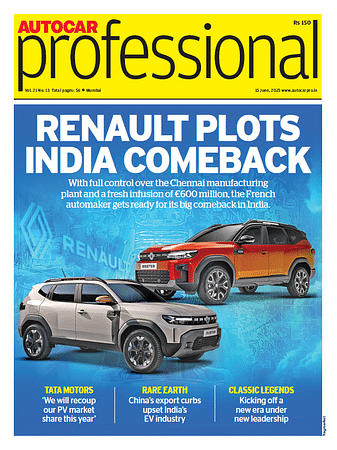PM E Drive scheme halves subsidy support for electric buses, but increases outlay
In the new scheme, the number of buses that will be supported has gone up, but the subsidy amount per bus has gone down. Against 5,595 electric buses in FAME II, E Drive supports 14,208 e buses.
Government of India's rechristened EV subsidy program, PM E Drive, has halved capital subsidies given for electric buses from Rs 20,000 per kwh to 10,000 per kwh.
The FAME-II scheme allowed a subsidy of Rs. 20,000 per kWh for e-buses within an overall cap of 40% of the vehicle’s cost and a maximum ex-factory price limit of Rs 2 crore.
In the new scheme, the number of buses that will be supported has gone up, but the subsidy amount per bus has gone down. Against 5,595 electric buses in FAME II, E Drive supports 14,208 e-buses.
"The demand aggregation [for e-bus] will be done by CESL in the nine cities with more than 40 lakh population namely Delhi, Mumbai, Kolkata, Chennai, Ahmedabad, Surat, Bangalore, Pune and Hyderabad. Intercity and Interstate e-buses will also be supported in consultation with states," the government said.
The government of India has also set up a payment security mechanism for payments from state transport undertakings by establishing a fund for Rs 3,435 crore.
Under the E Drive scheme, the exiting domestic value addition norms will continue to be in effect, which means that all electric buses will have to compulsorily have 50% components manufactured in India.
Addressing the media after this much-awaited announcement, India's information technology minister, Ashwini Vaishnav, said that the "government has learnt its lessons from FAME 1 and FAME 2 scheme" and that it was looking to take electric vehicle industry towards exponential growth.
Meanwhile, the government said that it has set apart subsidies and emand incentives worth Rs 3,679 crore have to incentivize e-2Ws, e-3Ws, e-ambulances, e-trucks and other emerging EVs and added that the scheme will support 24.79 lakh e-2Ws, 3.16 lakh e-3Ws, and 14,028 e-buses.
The scheme also proposes the installation of 22,100 fast chargers for electric four-wheelers, 1,800 fast chargers for electric buses and 48,400 fast chargers for electric two- and three-wheelers with an outlay of Rs 2,000 crore.
RELATED ARTICLES
Anand Group’s Gabriel India to Acquire Asia Investments Pvt Ltd’s Automotive Business
Use this as strap - Strap – Apart from Anchemco, which makes automotive fluids and adhesives, AIPL's equity holdings in...
Electric 2W Industry Poised to Grow Without Demand Subsidies: Ather’s Tarun Mehta
As EV adoption grows, the government has been progressively scaling back subsidies, signaling a deliberate policy shift ...
Mahindra Trucks & Buses Steers Through Industry Headwinds, Achieves Key Financial Turnaround
This milestone comes as the company recorded flat growth in volumes, successfully limiting its decline to just 1% in an ...





 11 Sep 2024
11 Sep 2024
 6293 Views
6293 Views





 Kiran Murali
Kiran Murali



 Shahkar Abidi
Shahkar Abidi

